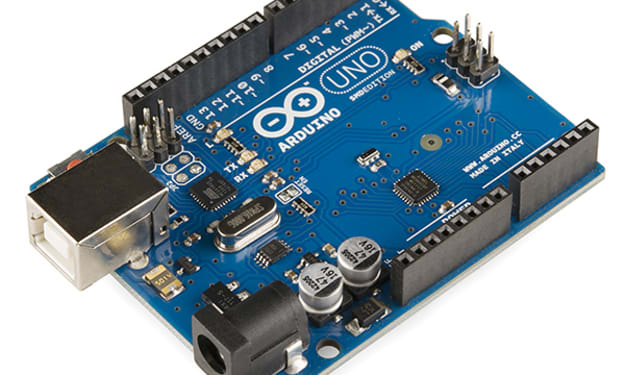
Transistor:
Transistor, semiconductor device for amplifying, controlling, and generating electrical signals. Transistors are the active components of integrated circuits, or “microchips,” which often contain billions of these minuscule devices etched into their shiny surfaces. Deeply embedded in almost everything electronic, transistors have become the nerve cells of the Information Age.
There are typically three electrical leads in a transistor, called the emitter, the collector, and the base—or, in modern switching applications, the source, the drain, and the gate. An electrical signal applied to the base (or gate) influences the semiconductor material’s ability to conduct electrical current, which flows between the emitter (or source) and collector (or drain) in most applications. A voltage source such as a battery drives the current, while the rate of current flow through the transistor at any given moment is governed by an input signal at the gate—much as a faucet valve is used to regulate the flow of water through a garden hose.
The first commercial applications for transistors were for hearing aids and “pocket” radios during the 1950s. With their small size and low power consumption, transistors were desirable substitutes for the vacuum tubes (known as “valves” in Great Britain) then used to amplify weak electrical signals and produce audible sounds. Transistors also began to replace vacuum tubes in the oscillator circuits used to generate radio signals, especially after specialized structures were developed to handle the higher frequencies and power levels involved. Low-frequency, high-power applications, such as power-supply inverters that convert alternating current (AC) into direct current (DC), have also been transistorized. Some power transistors can now handle currents of hundreds of amperes at electric potentials over a thousand volts.
How important are transistors?:
Transistors can be found in digital and analog switches, signal amplifiers, power regulators and equipment controllers. They are used as the fundamental components of modern electronics such as cooking equipment, computers, pacemakers, airplanes, car ignitions, control systems, accessories in industrial machine controls, and power inverters for household air-conditioning devices. And those are just a few examples.
Transistors are so important that engineers and scientists spend countless hours working on ways to improve their efficiency.
Recently, scientists developed a new kind of graphene-based transistor and demonstrated that it had ultra-low power consumption when compared with other similar transistor devices.
Earlier this year, a team of engineers invented a scalable transistor with power-handling capabilities 10 times greater than current thin-film transistors. The team's findings could transform thin-film electronic devices with applications in display technology, medical imaging and renewable energy.
And while transistor fabrication is a complex process that requires high temperatures and high-vacuum equipment, University of Pennsylvania engineers have shown a new approach for making these devices: sequentially depositing their components in the form of liquid nanocrystal “inks.”
Not only does the breakthrough open the door for electrical components to be built into flexible or wearable applications, but it also implies that one day transistors can be constructed by additive manufacturing systems, such as 3-D printers.
Listed here are only three of the many breakthroughs that are occurring when it comes to transistor technology—an indication that transistors are the heartbeat of our endless pool of electronic devices.
Uses of transistor :
In our modern society, extensive use of electricity has enabled various uses of transistors in every electronic circuit. Transistors are used in our day to day lives in many forms which we are aware of as amplifiers and switching apparatus. As amplifiers, they are being used in various oscillators, modulators, detectors and nearly in any circuit in order to perform a function.
In a digital circuit, transistors are used as switches. According to various functionality, there are transistors of different types such as for functioning in low and high frequencies, there are low, medium and high power transistors.
Various Applications and Uses of Transistor:
The core use of transistors include switching applications or both as amplification and switching.
There is a kind of transistors which produce current flow depending on the amount of light shined upon them, those are known as photo transistors.
Bipolar Junction Transistors(BJT) can cause a greater current flow from the emitter to collector when a small amount of current is passed through the base.
Field Effect Transistors acts as voltage controlled devices. Field Effect Transistors (FETs) have very high input impedance and it helps to run very little current through them. This is helpful for not causing the power source to load down as they are not disturbing the original circuit power elements on which they are connected to. FETs are cheaper and easier to manufacture and cause less loading.
Hetero junction Bipolar Transistors (HBT) can provide faster switching speeds and is used in analog and digital microwave applications. They are priceless to fabricate and can provide better lithographic yield. They are used in mobile and laser drivers as power amplifiers.
Darlington Transistors has much higher ability to gain current. Because of its sensitivity, it can pick currents from human skin and that is why it is used in creating a touch-sensitive button.
Schottky Transistors diverts high input currents and prevents the transistors from saturating.
Multiple Emitter Transistors are used in Transistor-Transistor Logic (TTL) and NAND logic gates.
Dual Gate MOSFETs are used in RF mixers/multipliers, RF amplifiers where two controlled gates are required in a series.
Avalanche Transistors has the capability of switching high currents in less than nanosecond transition times.
About the Creator
Iftikhar Ahmed
Freelance writer.






Comments
There are no comments for this story
Be the first to respond and start the conversation.